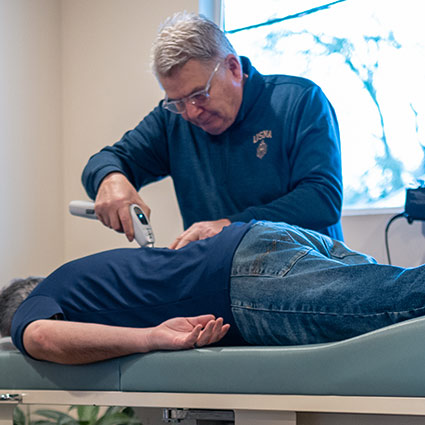How Can Chiropractic Care Help Me Feel Better?

The Chiropractic Mindset:
Nature designed your body to be healthy & self-healing. Pain, discomfort and health problems is your body’s way of telling you something is in the way of your body working as it should. Your spine and nervous system play a significant role in your health.
Your nervous system is the communication system, carrying important signals between your brain and the rest of your body. Spinal malalignment can cause incoherence in your nervous system (brain body functions). This will lead to problems not just in your muscles and joints but your overall health.
Spinal misalignments can develop from poor posture, injuries, chronic stress, or even sleeping in awkward positions.
The vertebrae in your upper neck surround and protect the brainstem, which controls many vital body functions such as balance, muscle tone, and organ activity. When these vertebrae shift even slightly out of alignment, they can disrupt communication between the brain and body. This causes the rest of the spine to adapt and compensate in an effort to reduce pressure on the brainstem. If left uncorrected, it can lead to muscle tension, joint and ligament pain, nerve interference, disc problems, spinal degeneration, and other body dysfunctions.
Dr. Handly uses an instrument called an Activator to apply Adjustments. There is no no twisting or popping your joints. They are gentle precise adjustments enabling your spine to rebalance, relieving pressure on your brainstem, spinal cord, nerves, muscles, joints, ligaments, discs restoring balanced biomechanics and clear nerve communications so you can be pain free.
Maintenance Care – Regular chiropractic visits help keep your spine aligned, prevent recurring issues.
No matter how you choose to utilize Chiropractic care we will provide you and your family the best care we possibly can.
Start Today
Contact us today to book an appointment!
CONTACT US »
[/builder_notebox][/one_third_last]
